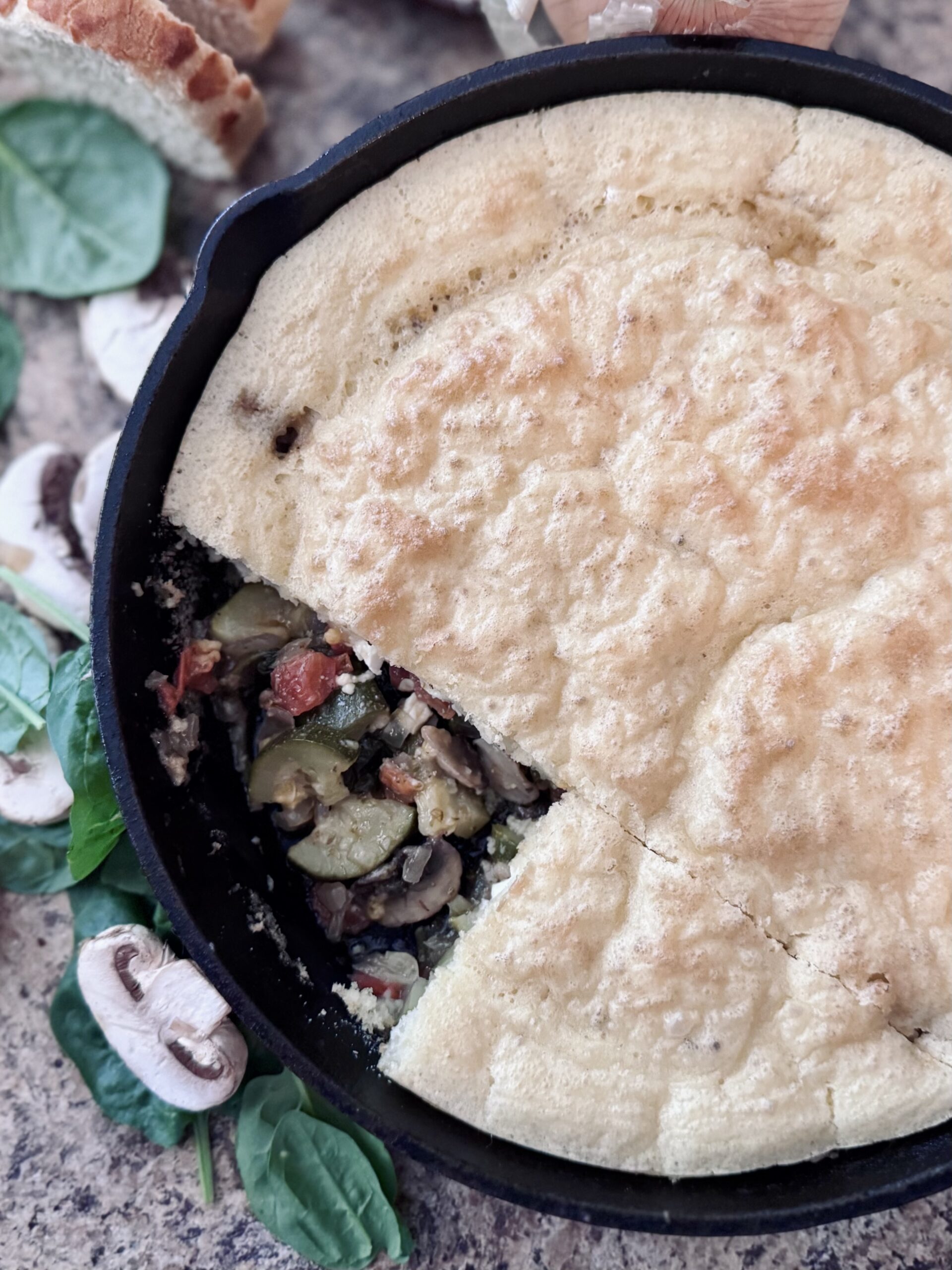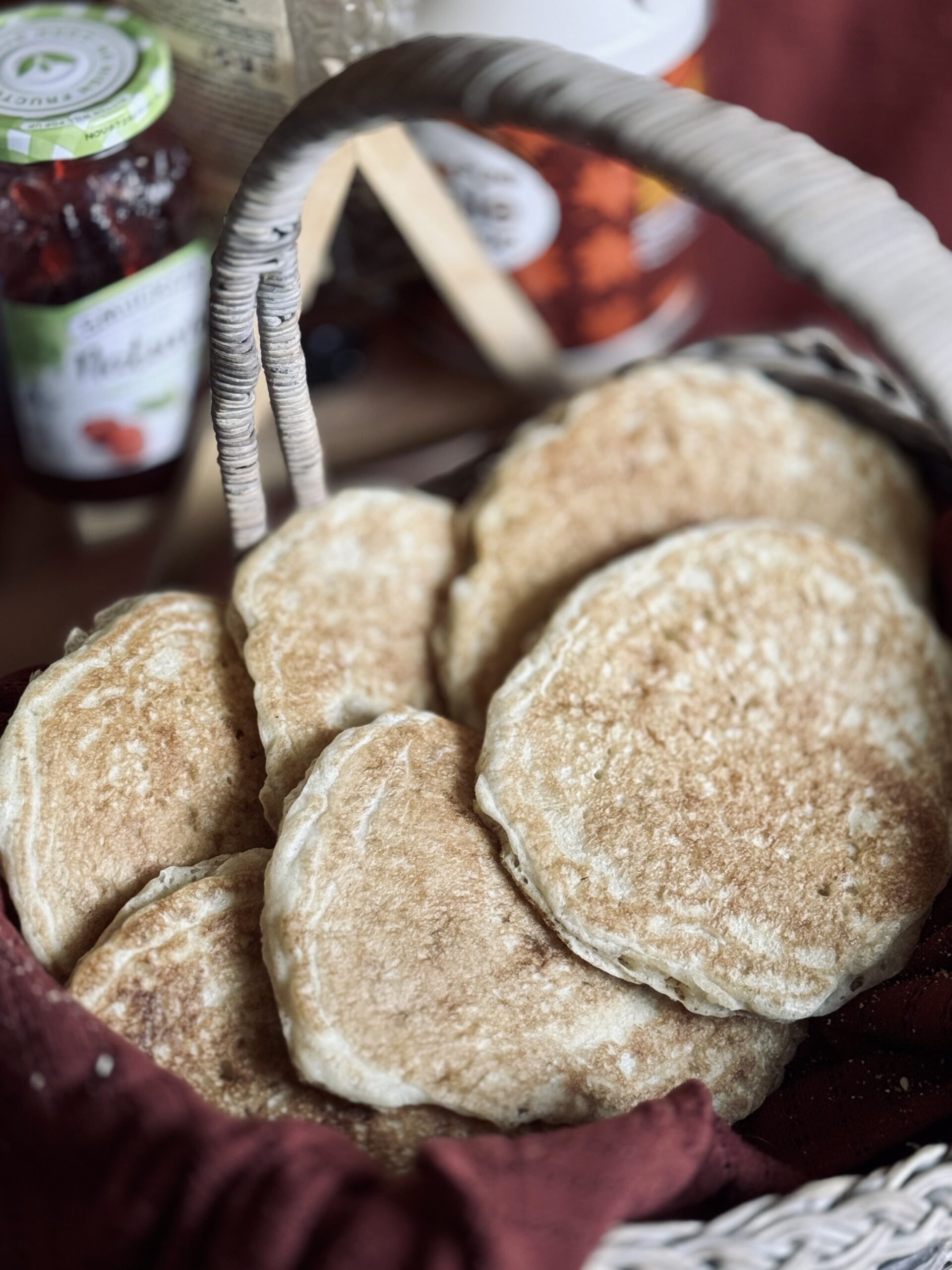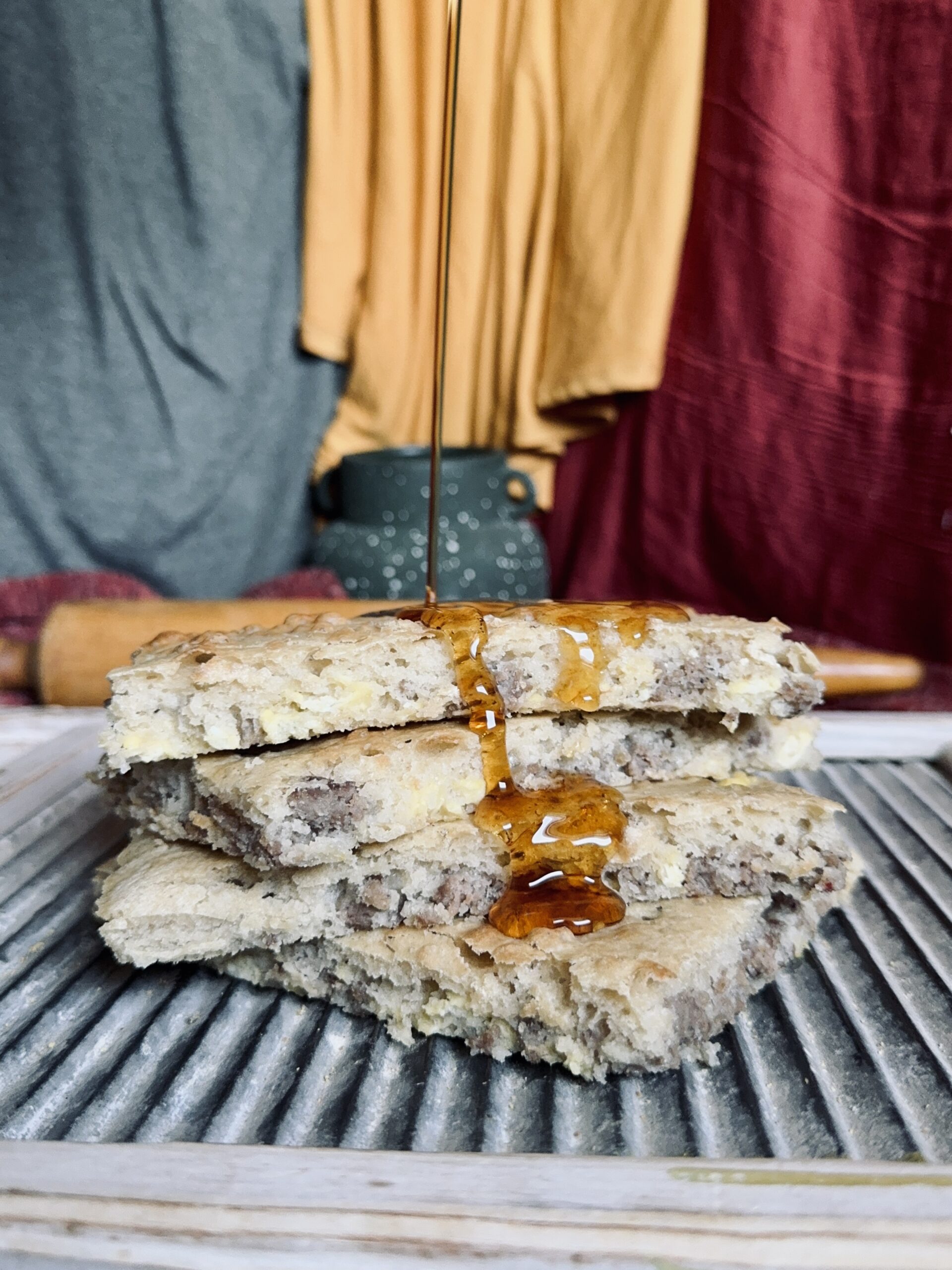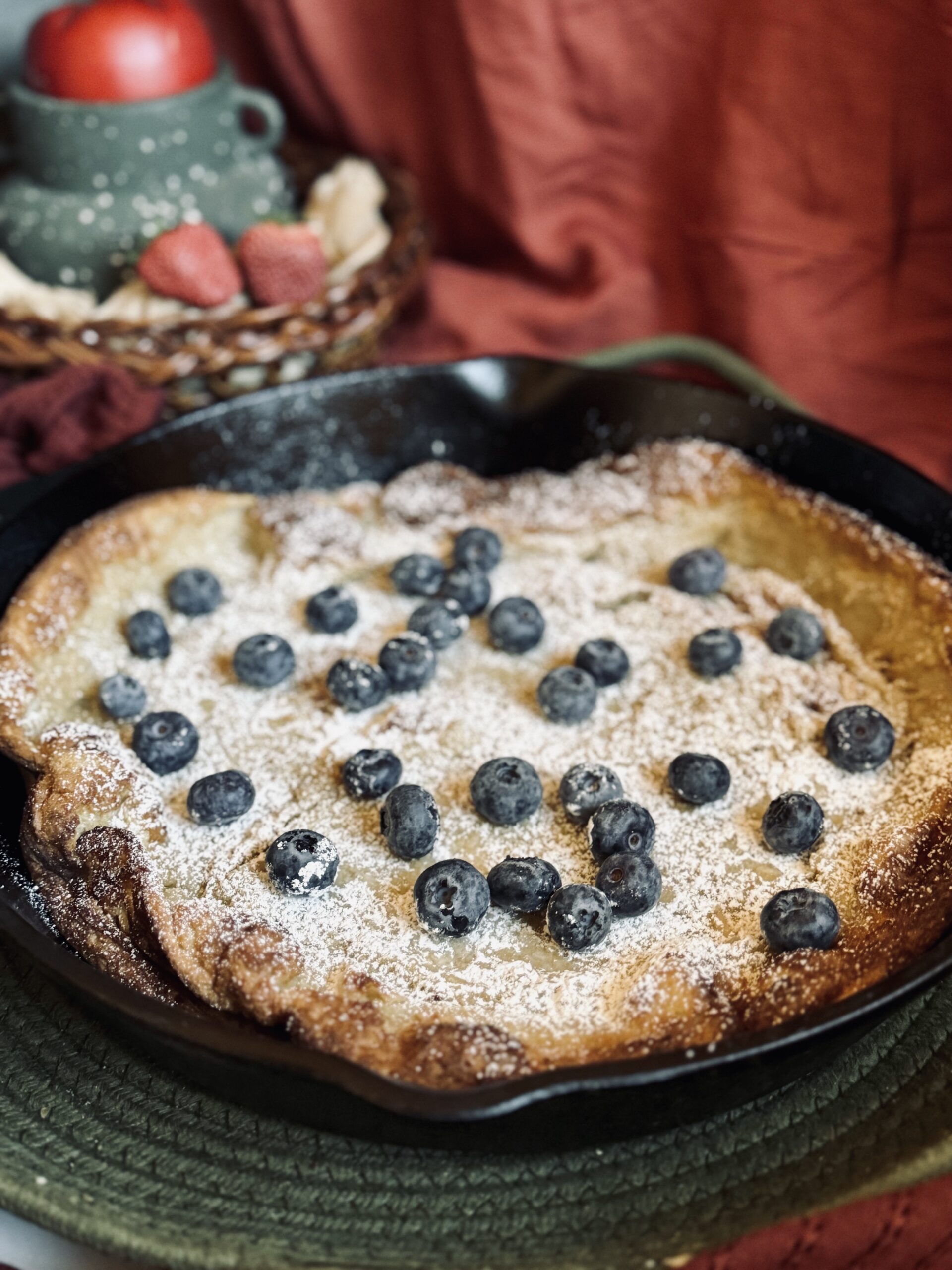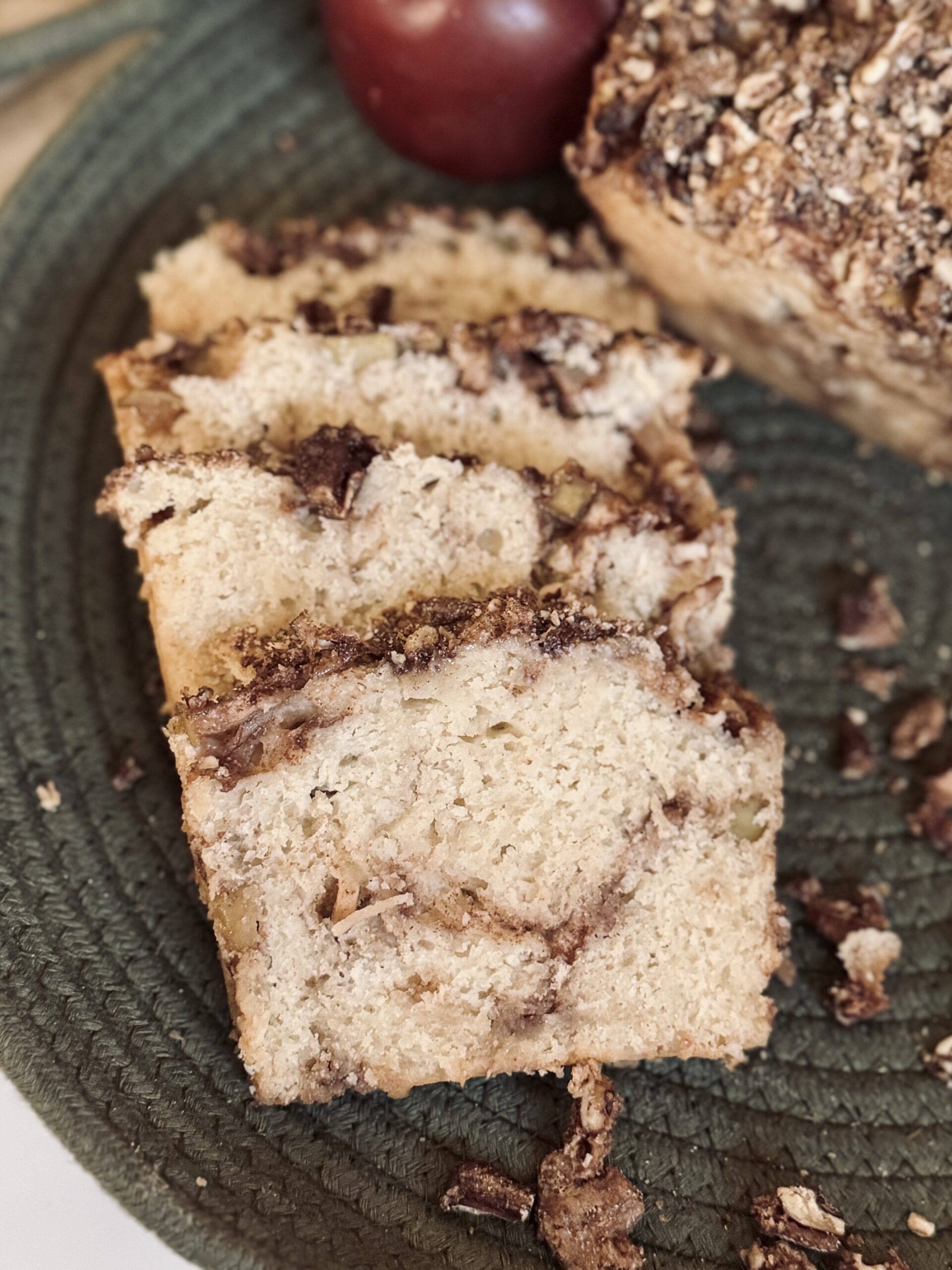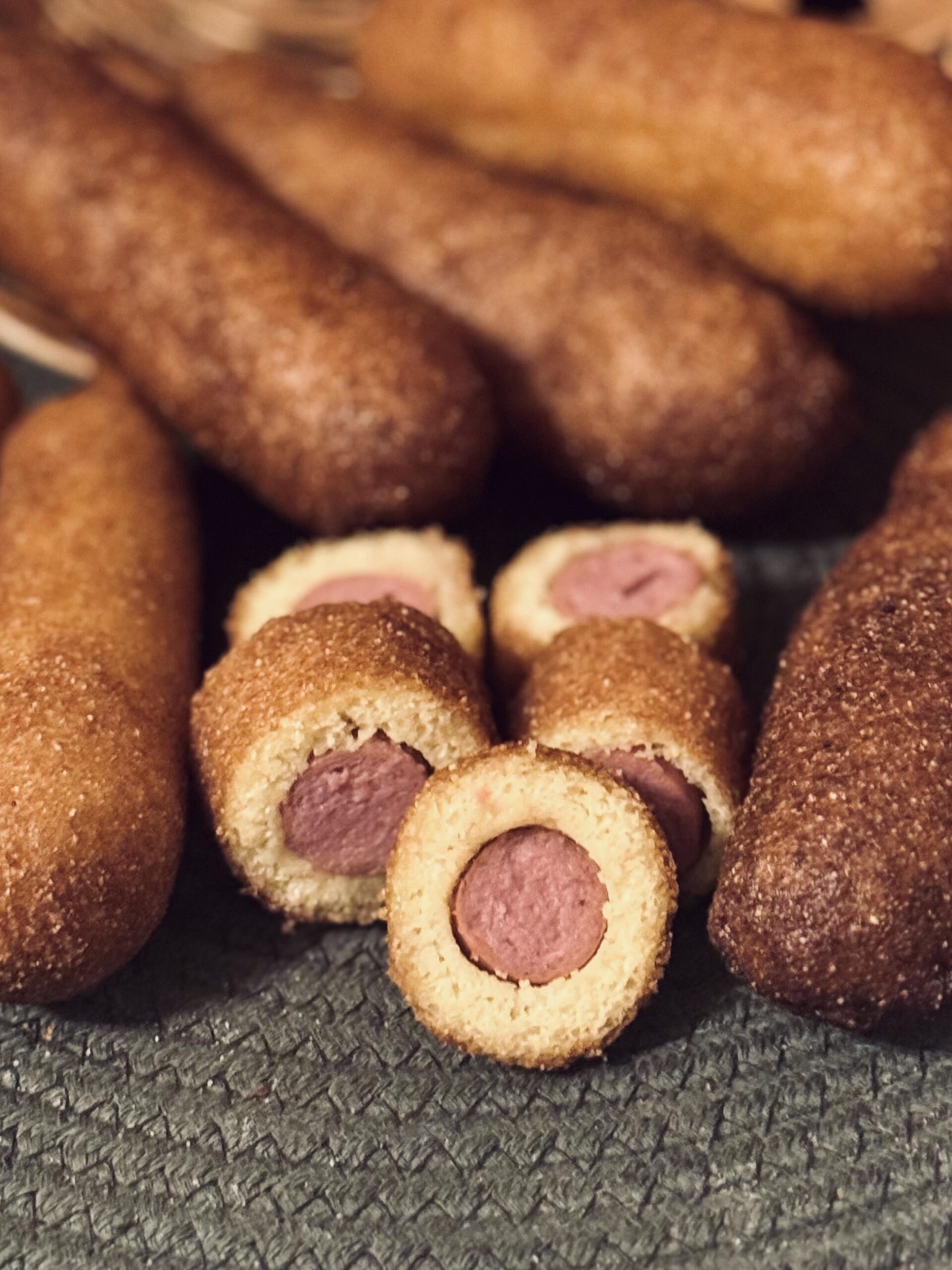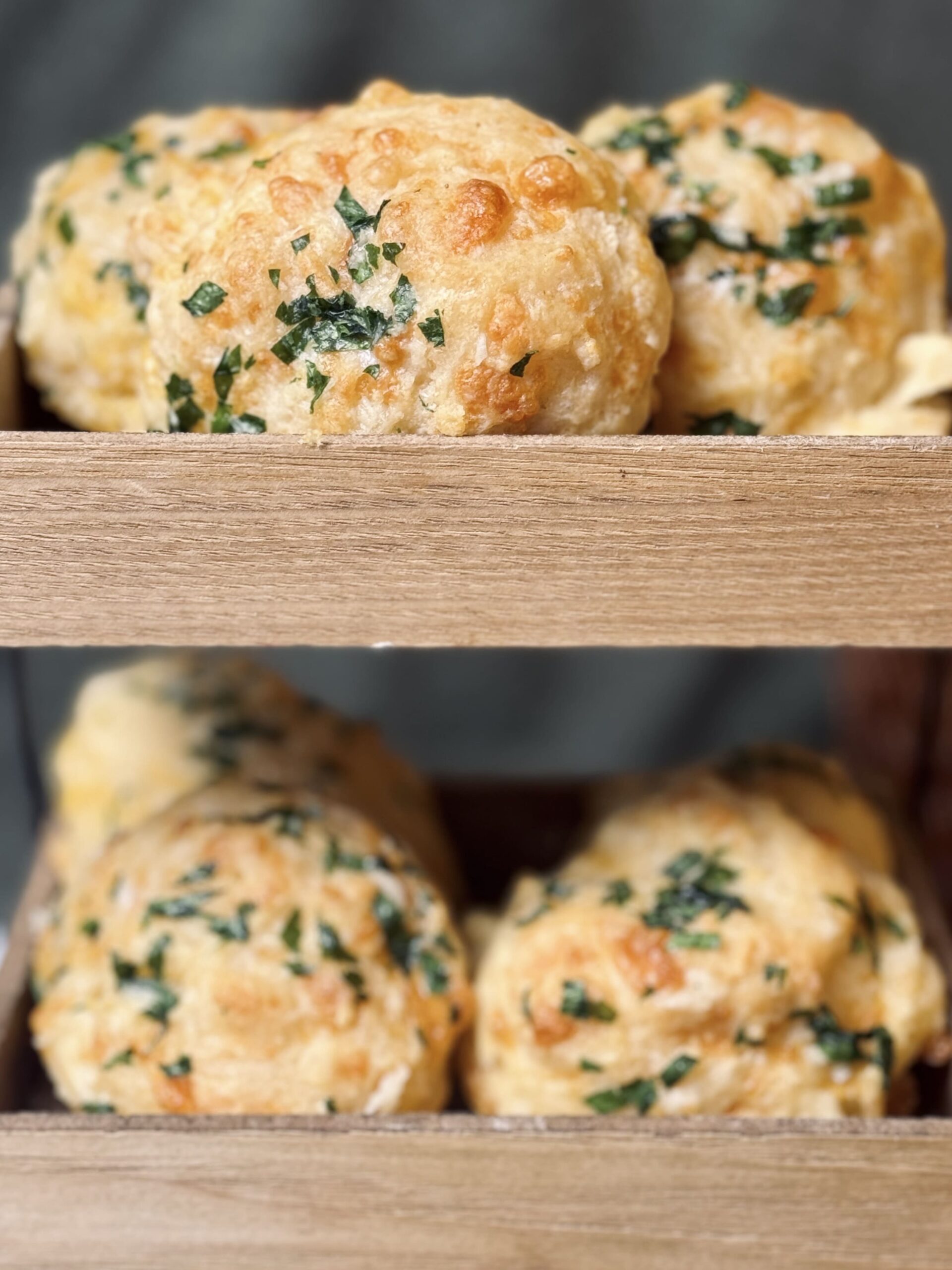About This Recipe
Who knew two ingredients could come together to create a light and crispy tempura batter? The elimination of unfermented flour in this recipe means my stomach is not upset after indulging. Choose a healthy frying oil, and you will have a new, guilt-free pleasure.
What Is Tempura Batter?
Tempura fry batter is a light and airy batter used in Japanese cuisine to coat vegetables, seafood, and other ingredients before deep frying. The batter is typically very thin, which results in a more delicate coating. Tempura fry batter can be just flour and cold water, though sometimes an egg or other ingredients, such as starch, are added.
What I Love About This Recipe
This tempura fry batter is so light and beautifully crisp, it tops just about any other fry batter I have made with my discard. Not to mention how simple and incredibly versatile this recipe is – use it for: vegetables, seafood, beef, chicken – you name it!
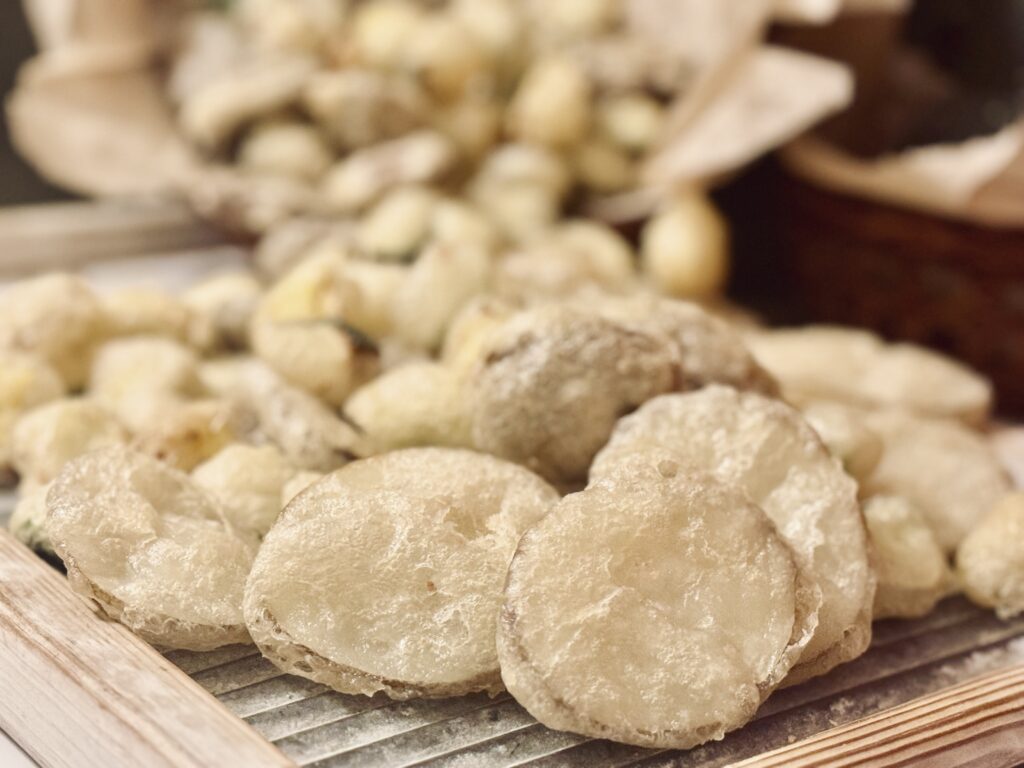
All The “Why’s”
Coating In Starch
Coating in starch serves two purposes. First, it helps pull any additional moisture from the vegetable or meat being fried. By doing this, the starch also helps the batter stick much more effectively. Starch is preferred here over flour, in order to keep the gluten content low, which aids in a crispier end result.
Cold Ingredients And Limited Mixing
If the bacteria in your starter have already completely broken down the flour in your starter (you can tell by the consistency of your starter – if it is thin and runny, it is broken down), this point is less important. That’s because cold ingredients and limited mixing are measures taken to limit the development of gluten, but with a flour that has already been broken down completely, gluten is not going to reverse its way back into being. In fact, it may be preferable in this recipe to use a very broken-down starter (as long as the flavor is good, of course).
Gluten and fry batter do not mix; too much gluten and the end result becomes chewy and oily. Warm water and excessive mixing encourage gluten formation; therefore, it only makes sense that cold water limited mixing keeps gluten’s development at a minimal.
Sourdough Discard
Tempura batter is made simply from flour and water – so of course it can be made with sourdough discard (which is also made from just flour and water). The sourdough discard in this recipe takes the place of flour and some of the water. Because tempura batter is typically very thin, we do need to add more water, which we will discuss in a moment. The awesome thing about this, though, is that we do not have to have any unfermented flour in this recipe: a major bonus for some.
It is important to note that with sourdough discard being the main ingredient in this batter, the result may or may not be sour. It all depends on your maintenance routine and the health of your starter. You can taste your discard (just a smidgen) before making this recipe – it’ll tell you what the results might look like! I have made this recipe many times and have never had a sour outcome, while others cannot even imagine making a recipe like this because their discard is so sour. Sourness comes from the bacteria in your starter. When they overpopulate, you can taste it.
For this recipe (as I mentioned above) it may preferable to use discard that is older, thinner, and broken down. Despite older discard being more acidic, I still have never found the goods I make from it to be overly sour. If your starter is healthy and well-maintained, your discard should be just fine.
Bubbly Water
Carbonated water helps create an airy, light, and crisp batter. CO2 gases in the bubbly water expand when fried, just like CO2 in your bread dough (which is a byproduct of yeast) expands during baking. This explosion of air leads to a less-dense, light and crisp fry batter, making it the perfect choice for thinning out the sourdough discard.
Frying
You can use any preferred frying oil to fry with tempura fry batter.
It is important to note that when cold ingredients are added to the oil, the temperature drops drastically. This is why it is important to heat the oil above the desired frying temperature when making this recipe. I usually fry my vegetables and meats at 350 F (175 C), so an oil temperature of 375 F (190 C; sometimes I even go up to 400 F [205 C], though this might be a little excessive) to begin with is incredibly helpful. Ideally, the maximum amount of time the vegetable or meat is in the oil is three minutes.
The batter should not absorb too much oil during frying, or else it will become soggy and greasy, rather than crisp. Soggy, greasy batter is caused by frying at too low a temperature. Vice versa, too high a temperature will make it difficult to cook your vegetables or meat all the way through.
Last, this batter stays relatively light in color even when cooked through or cooked at high temperatures. That’s because there aren’t any ingredients that promote browning in the batter (i.e. sugar, milk, etc). The use of starch to help dry out the vegetables/meat also keeps the batter lighter in color. Therefore, keep this in mind and only fry until what you are frying is cooked through; do not look for the batter to turn brown.
A Fine Seasoning
Last, use a fine, rather than coarse, seasoning at the end. This will stick to the coating much better, resulting in less waste and better flavor.
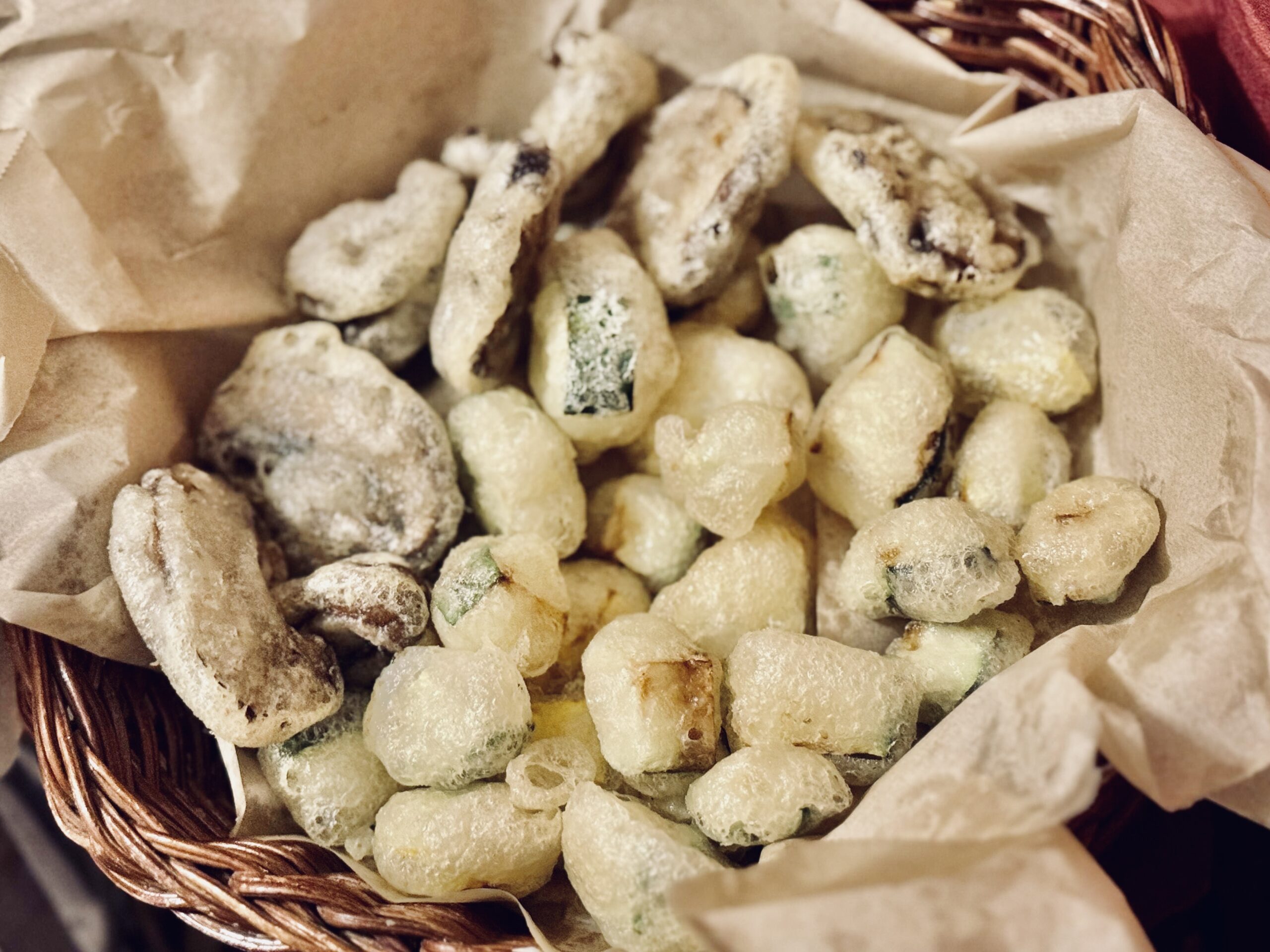
📌 Quick Tip: Read the recipe in its entirety before you start cooking. This will help you understand the ingredients, steps, and timing involved, and allow you to prepare any necessary equipment or ingredients beforehand.
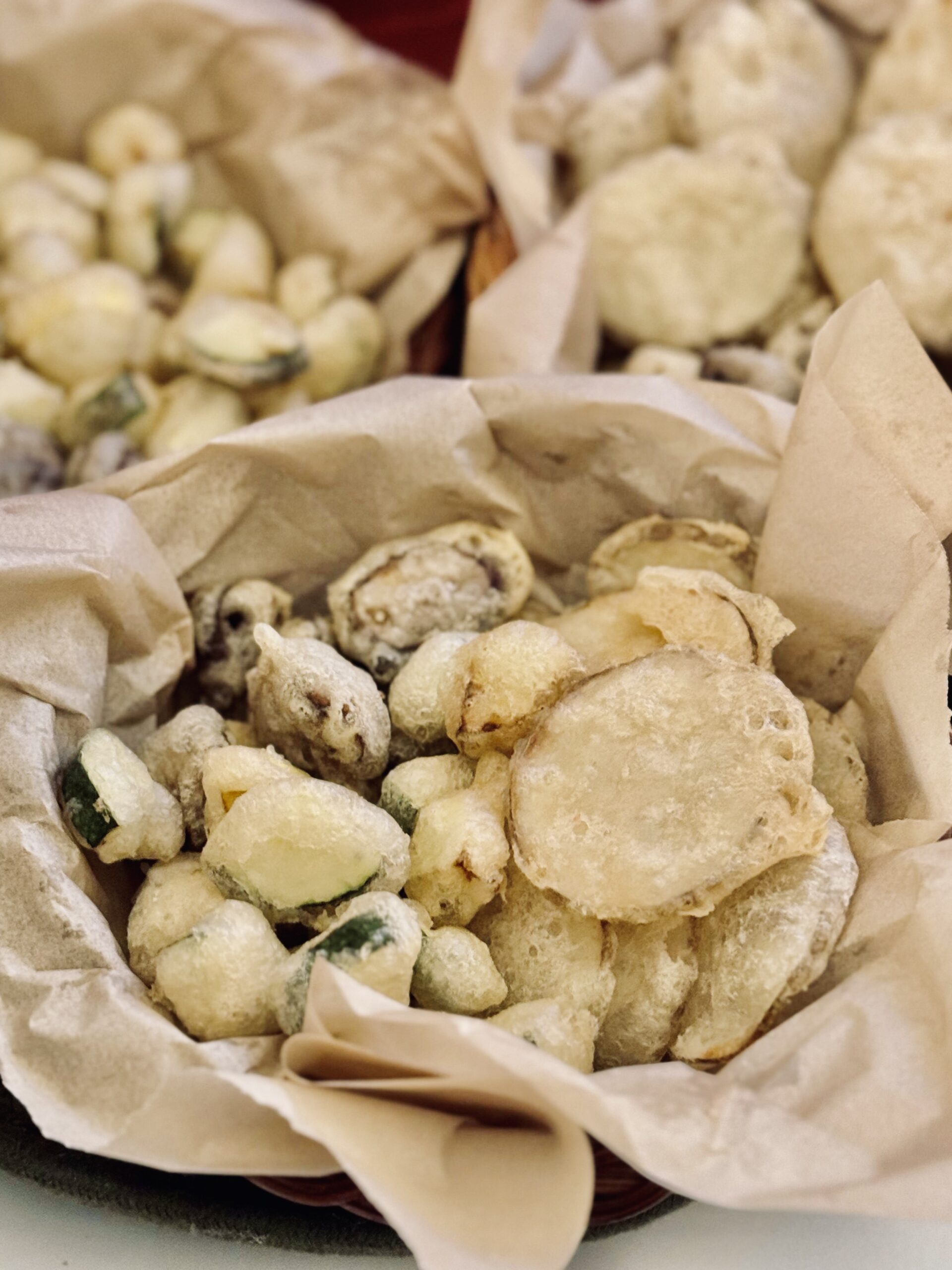
Tempura Fry Batter
Ingredients
For the batter
Other
Instructions
-
Prepare the oil
Heat approximately two inches of oil in a cast iron skillet or Dutch oven to 375 F (190 C). The oil needs to be hotter than the desired frying temperature, as the temperature will drop rapidly when cold ingredients are added.
-
Prepare the vegetables and/or meat
Chop vegetables and/or meat to desired size for frying. Coat the vegetables lightly in starch. This will help the batter stick much better.
-
Make the batter
In a small bowl, combine the sourdough discard and carbonated water. Whisk until just combined.
DO NOT overwork the gluten by overmixing, which can affect the final texture/crispiness. -
Dip and fry
Dip the prepared vegetables and/or meat into the batter and immediately drop into the frying oil. It is best to dip and drop each vegetable slice or piece of meat individually, as it is essential the pieces do not stick together. Maintain an oil temperature of about 350 F (175 C). Flip each piece halfway through frying. Fry until lightly golden and crispy, 1-3 minutes (depending on what is being fried).
Since starch is included, the batter may not deeply brown. Pull the vegetables and/or meat when they are finished cooking. -
Drain and season
Transfer the fried vegetables/meat to a wire rack to drain. Season to preference.
Use fine, not coarse, seasoning, as it will stick much better.
Servings 6
- Amount Per Serving
- Calories 102kcal
- % Daily Value *
- Total Fat 0.9g2%
- Saturated Fat 0.19g1%
- Sodium 228.35mg10%
- Potassium 44.27mg2%
- Total Carbohydrate 19.46g7%
- Dietary Fiber 0.82g4%
- Sugars 1.73g
- Protein 4.05g9%
- Calcium 26.1 mg
- Iron 1.46 mg
- Vitamin E 0.07 IU
- Vitamin K 0.26 mcg
- Thiamin 0.26 mg
- Riboflavin 0.16 mg
- Niacin 1.8 mg
- Vitamin B6 0.04 mg
- Folate 21 mcg
- Phosphorus 39.37 mg
- Magnesium 14.2 mg
- Zinc 0.38 mg
* Nutrition values are auto-calculated and should be used as an approximation only. In addition, the values may not accurately represent the serving divisions of the recipe, instead representing the nutrition of the recipe as a whole.
Notes
- Storage: I highly recommend eating anything made with tempura fry batter fresh. It will never be as good reheated as it is fresh. If you must store, cool completely before sealing in a ziploc bag and placing in the refrigerator for three to five days. To reheat, air fry until warmed through and crispy.
- Prepare everything before making the batter. Use the batter immediately after mixing. The carbonation bubbles from the water are important to getting the crispiest tempura.
- Keep the batter ingredients cold and do not overmix. Use sourdough discard and carbonated water from the fridge. This will help prevent the overdevelopment of gluten and give a crispier tempura
- Some tempura batters include egg. When testing this side-by-side, I did not find the egg necessary. In fact, the batter without the egg was crispier. If you choose, you can add one large egg (about 50 g) to the batter and reduce the amount of carbonated water to 75 g.


